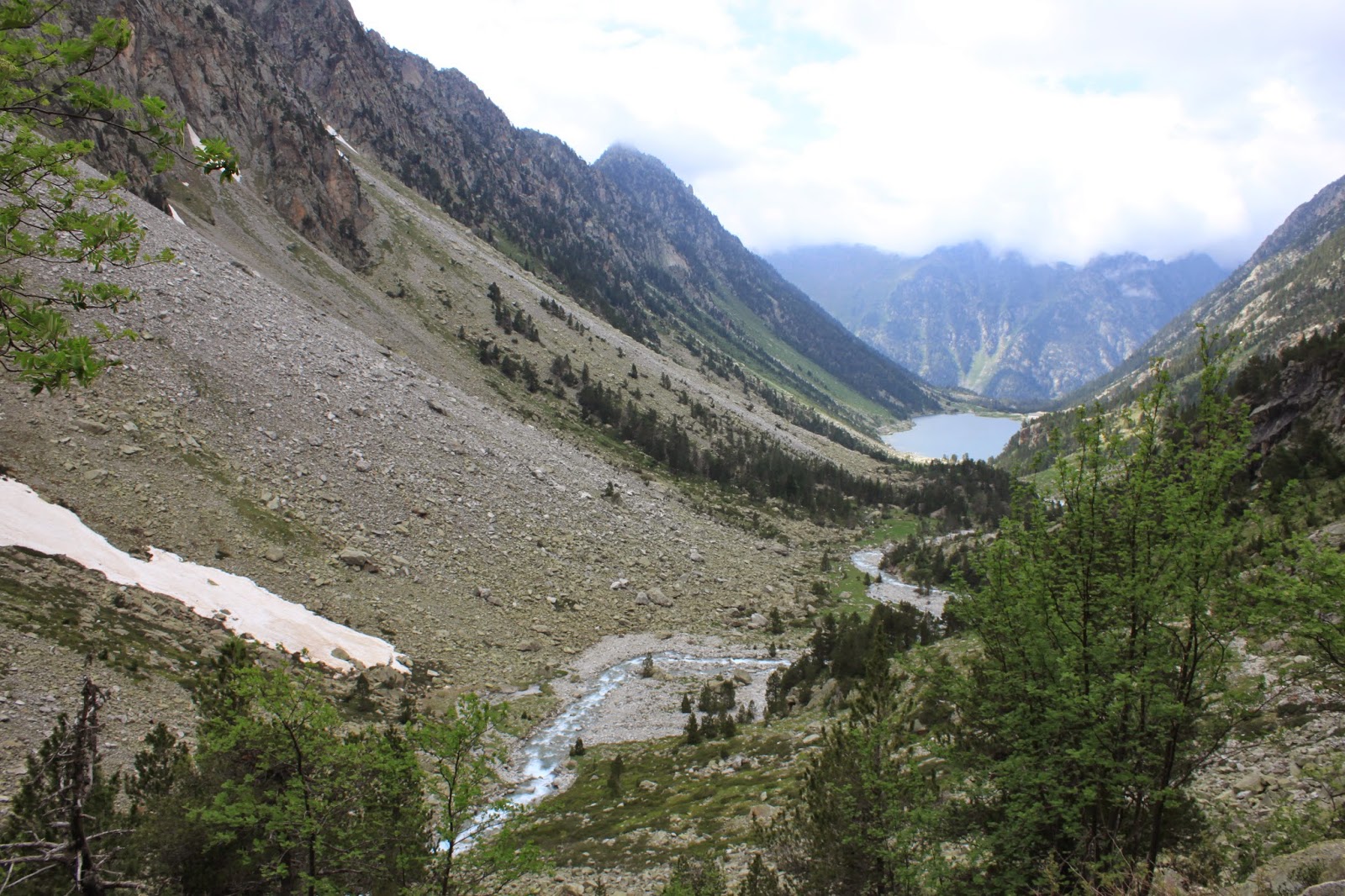 |
| Lac de Gaube |
 |
| Admiring the cascade |
The wonderful and varied flowering plants present are those normally found on limestone and are similar in many ways to what we see back home, plus more acidic species too; here though there is more variety and just lots more of them over a much more extensive area. However where the ground is saturated, or water runs through it, the nutrients are poor and plants like butterwort appear in the mix, flowering amongst mossy patches, with orchids liberally scattered between - this was an amazing sight.
 |
| Globe flowers |
The butterworts trap insects on their leaves to supplement their diet, as the soil in which they grow is poor in nutrients, giving them a competitive advantage over other species.
 |
| Butterwort |
The alpenrose was spectacular and seemed to be a perfect fit on this mountainous habitat - I had to keep telling myself that it was not an invasive weed as it is at home in our countryside.
 |
| Rhododendron - Alpenrose |
 |
| Asphodel |
 |
| Early Purple Orchid |
The sub-alpine zone where we were largely walking, but we did also visit higher locations and it was clear to see the differences in the species present.
 |
| Meadow? Saxifrage |
 |
| Cowslip |
 |
| Long-flowered Primrose |
 |
| Mignonette-leaved? Bittercress |
 |
| Southern Marsh Orchid? |
There are certain species that speak of a high altitude existance, for example some of the gentians, thrifts, saxifrages and snowbells (see below). These are classics of the mountains.
You have to time your visit right to see them in flower (which we did!). Inevitably, however, if you visit for just one week in a year, some other species will have flowered already or are yet to appear; but by hunting carefully where conditions are most harsh, a few examples of the early season flowers can still be found, and by finding areas were conditions are particularly sheltered examples of precocious early flowering individuals can also be discovered. The next blogs provide some great examples of both of these scenarios, with daffodils and a fritillary (early season) and iris (later season).
 |
| Mountain? Thrift |
 |
| Birdseye Primrose |
 |
| The diminutive Frog orchid |
 |
| Moonwort (a very small but exciting fern) |
 |
| Butterwort |
 |
| Southern? Gentian |
 |
| Butterwort |
 |
| Alpine Poppy |
Some higher altitude species:
 |
| Alpine snowbell |
 |
| Moss campion - an example of a low glowing plant able to survive harsh conditions |
Some of this winter's snow still lay on the ground at the level that we were at. All the mountains still had lots of snow on their tops too. Here the snow and fallen onto a river (perhaps frozen at the time?) and now that the weather is warmer the flowing water has created a tunnel.
 |
| Pyrenean? Avens |
The path lead us up to the cirque at the foot of the rocky mountain slopes. We ran out of time and energy but were glad to make it to this height. The sward was very short and one of the graziers were the marmots. The snow has a large effect on retarding the growth of the grass and it looked like it had not long gone from this area.
 |
| A marmot |
There are around 200 endemic Pyrenean plant species - an endemic species is one that is specific to a certain, defined area and which evolved in this locality, such as the Pyrenean buttercup.
 |
| As high as we reached |
 |
| Pyrenean Buttercup - not found below 1700m - the only flower in some areas |















No comments:
Post a Comment
Have your say...